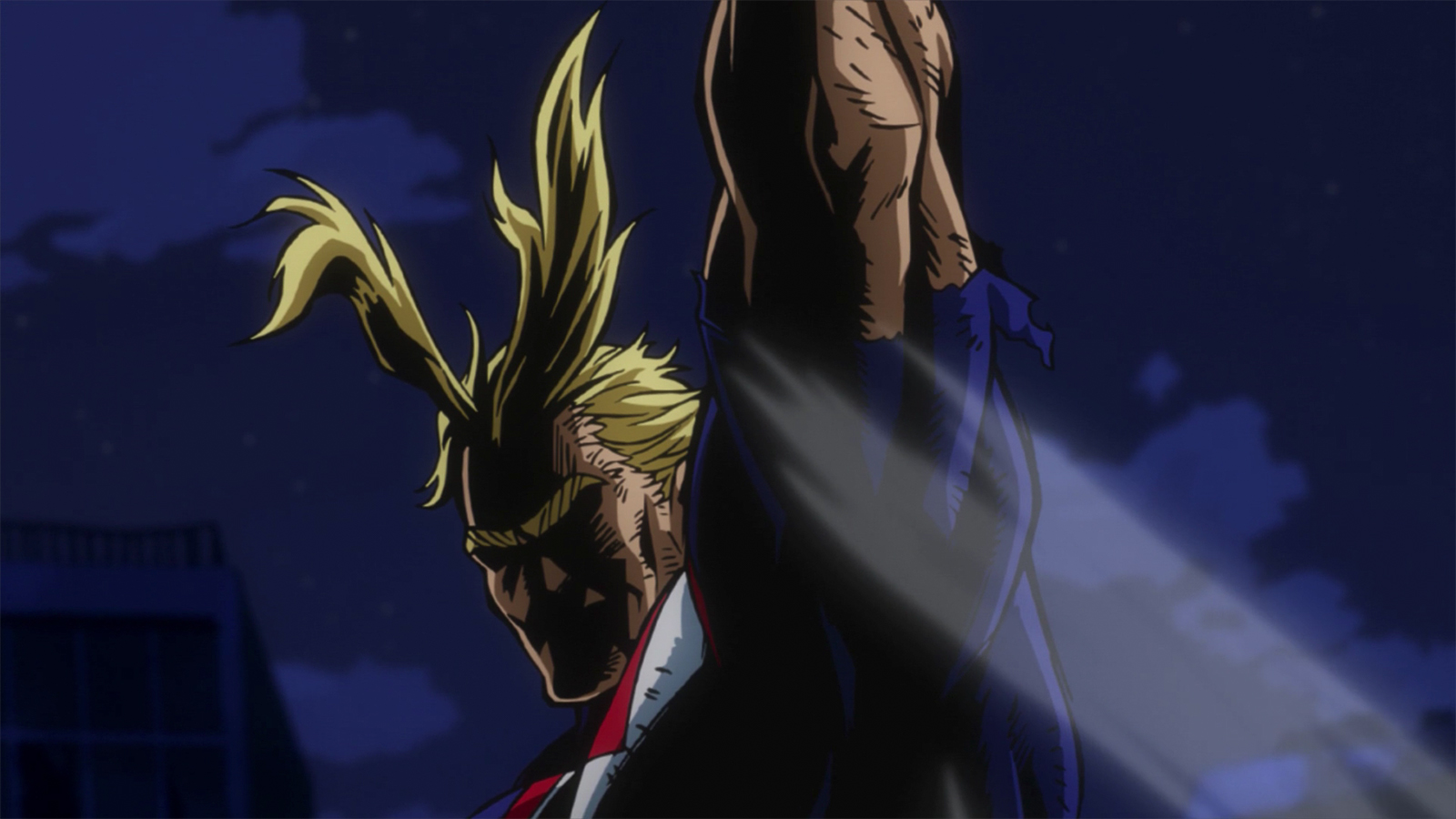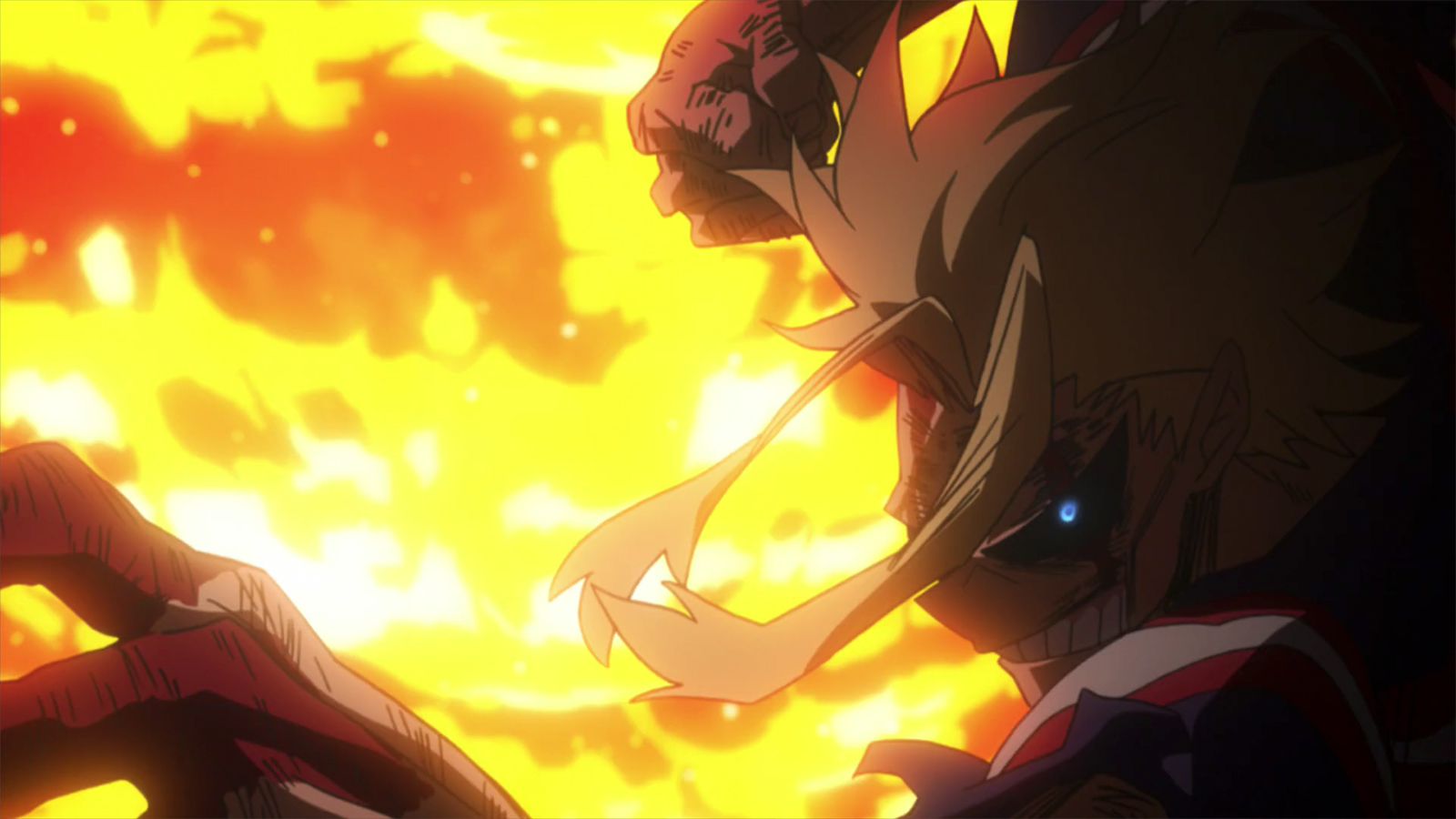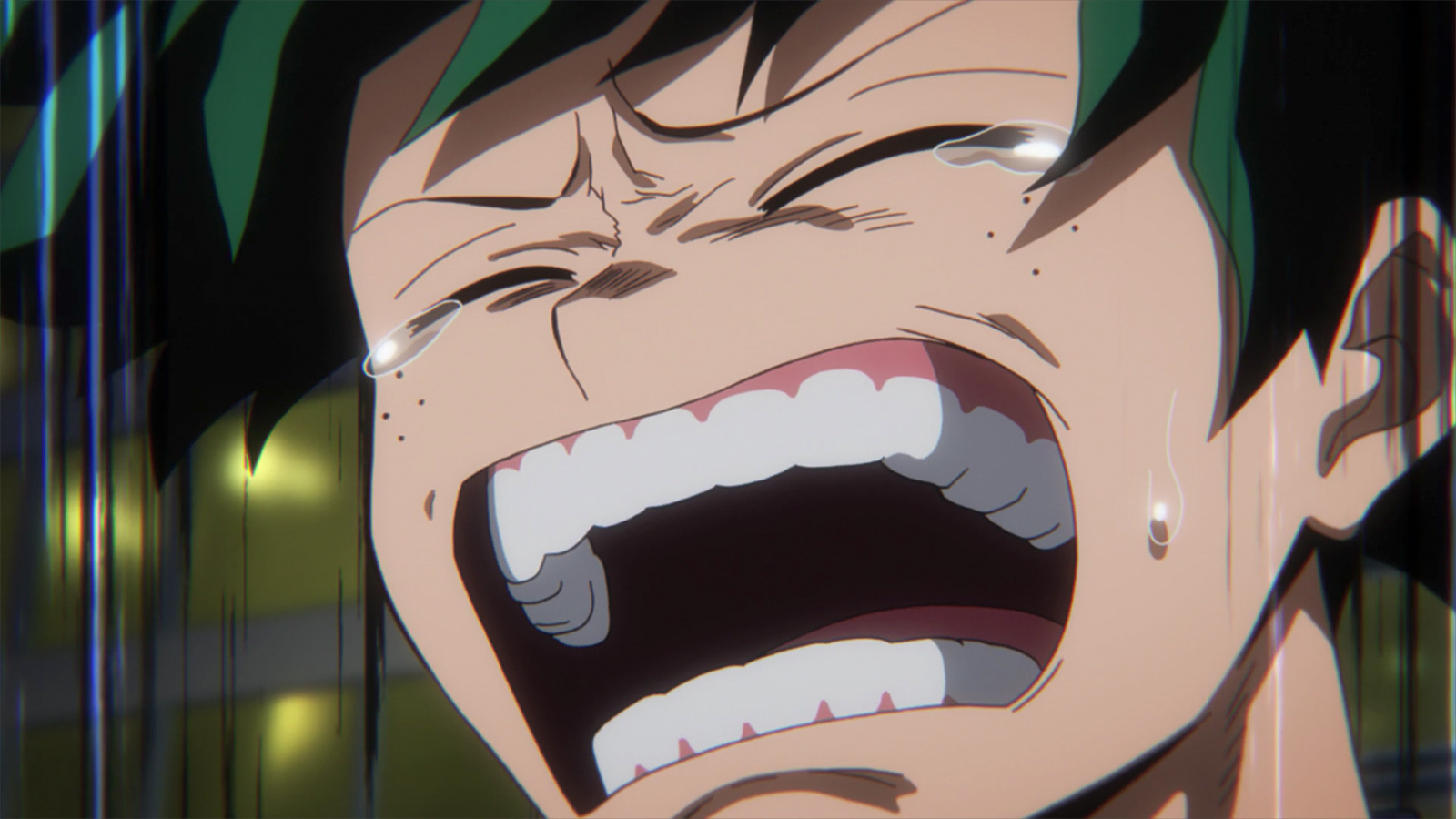
My Hero Academia borrows a lot of inspiration from both action manga and superhero comics. A significant part of why this combination works is because it subverts much of its major influences, the most effective example of this being the lack of a status quo. There is no “normal” in the world of My Hero Academia. Every arc, action, and event has an impact on the story — something changes after every major event and those changes are constantly felt going forward. This element of the series is what makes it, in my opinion, one of the best superhero series and action anime of recent times.

The Day Is Saved
Any fan of Western superhero comics — and a good amount of popular action anime — is familiar with the one convention that has remained steady in these mediums throughout an age of subversive titles. That convention: the status quo.
Even after big, crossover events, creator-driven runs, or the death of a major character … superhero franchises just go back to normal. The story is reversed or shifted around to bring things back to how they were before — time is reversed, someone wakes from a bad dream, we discover all these terrible events happened in a different timeline to some doppelganger and our beloved heroes are safe. Consequences are effectively eliminated. Popular, long-running action anime and manga series often follow a similar convention. Though not as hard-set on the status quo, these types of anime sometimes avoid major lasting effects from big arcs and battles — in Dragon Ball, characters are constantly brought back to life, negating the consequences of their death.
There’s an obvious upside to this convention — resetting, rebooting, or reversing progress allows these franchises to go on basically forever should they want to. While it may sound repetitive, this rinsing and repeating of the status quo isn’t necessarily a bad thing — experimentation and odd, out-of-the-box ideas can be implemented because things will go back to normal soon after. That said, when a superhero action anime series like My Hero Academia does make use of consequences and lasting effects, it makes for both a nice change of pace and an interesting exploration of the effects superheroes, villains, and their battles have on the world and its inhabitants.

The Fallout
The main method in which My Hero Academia breaks away from the static worlds of its influences comes in the form of the aftermath of big battles and arcs in the series. Perhaps the best example of this is All Might’s final battle as a hero against All For One — this is not just meant to be an emotional farewell for a beloved hero and mentor, it has a lasting impact that is still felt in recent chapters of the manga. All Might’s retirement is the catalyst for a major sea change in the world of heroes, from Endeavor’s character arc to the rise of villains and the loss of goodwill toward heroes from the general public.
Another interesting and unique example of lasting effects in the series comes in the form of Deku’s injuries. In any other anime or superhero comic, Deku’s broken arms, fingers, legs, etc. would be healed in a few weeks, magically restored back to normal. While his injuries are typically cured and usually only last a short time, the effects of them are realistic — if he keeps breaking and healing his arms, the scar tissue and frequent nerve, muscle, and bone damage will make his arms unusable. We see these effects in Deku’s shift to kick-based fighting and constant physical therapy exercises during down time. These injuries are real, and he can’t keep getting hurt and recovering without major consequences, unlike Goku and Naruto or Batman and Spider-Man. Deku’s injuries have been manageble thus far, but they’re indicative of My Hero Academia’s commitment to showing that the aftermath of every major event is not temporary. No detail is brushed off and every action has a consequence — some of which we are only beginning to see the ramifications of … how long can Deku avoid physical catastrophe in this line of work?
The latest arc in the manga is good proof of this. Without spoiling the specifics, after a huge, city-wide battle between heroes and villains, the damage left behind is … horrifying. So horrifying, in fact, that one hero simply looks upon it and realizes they don't want to be a hero anymore. This unnamed hero is a stand-in for traditional superhero media; things are supposed to be “and then the day was saved” and everything is okay … but not in My Hero Academia, every battle and event has a tragic fallout, and it's a lot to put on the shoulders of heroes both young and old.

Battle Scars
Not only does the dynamic world of My Hero Academia make it a more interesting, effective, and often unpredictable series, it also makes it feel like a series with a clear end in mind — another divergence from some of its anime/manga and comics influences. The series seems to be working toward something, pushing things forward to an endpoint in each new arc with the consequences of the previous arcs. My Hero Academia has proven itself time and again to be a surprising and unique series — one that explores tragedy, loss, the weight of being a hero, and a wide range of other powerful themes and emotional spectrums — and much of its ability to explore these aftereffect themes and concepts stems from the way the story seemingly rejects not only an in-universe status quo, but the genre's writing norms, in general.
Sean Aitchison is a freelance writer and researcher. Follow him on Twitter and browse his website for more of his work.
Do you love writing? Do you love anime? If you have an idea for a features story, pitch it to Crunchyroll Features!
Source: Latest in Anime News by Crunchyroll!
Comments
Post a Comment